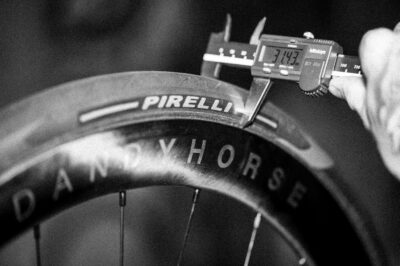

The trend towards wider tires in almost all cycling disciplines is hard to miss. Not long ago, it was clear: road bike – 23 mm, mountain bike – 2 inches. However, now it is no longer so obvious. Currently, the most popular tires on asphalt bikes are 28-30 mm, and in MTB – 2.25 inches. What’s more, everything indicates that the manufacturers of sports bikes have not said their last word in this matter. Some of the latest road bikes, such as ENVE Meele or Cannondale Synapse, have space for tires 35 mm wide, which has so far been associated more with gravels. Such wide road tires require wider rims. Due to the dynamically changing standards, it is becoming increasingly difficult to keep up with the topic. That is why we decided to gather the facts and organize them in one place.
Tires are the most important part of a bicycle, as they are the link between it and the ground, and their properties have a huge impact on the ride characteristics. The shape and fit of the tire depends on the internal width of the rim profile. Although most people pay attention mainly to the height of the rim profile, the internal width is just as important for speed and stability. In the wheel specification, two values are usually given – the external and internal width of the rim. The external width has a small impact on aerodynamics and is less important for athletes, while the internal width is crucial for tire placement.
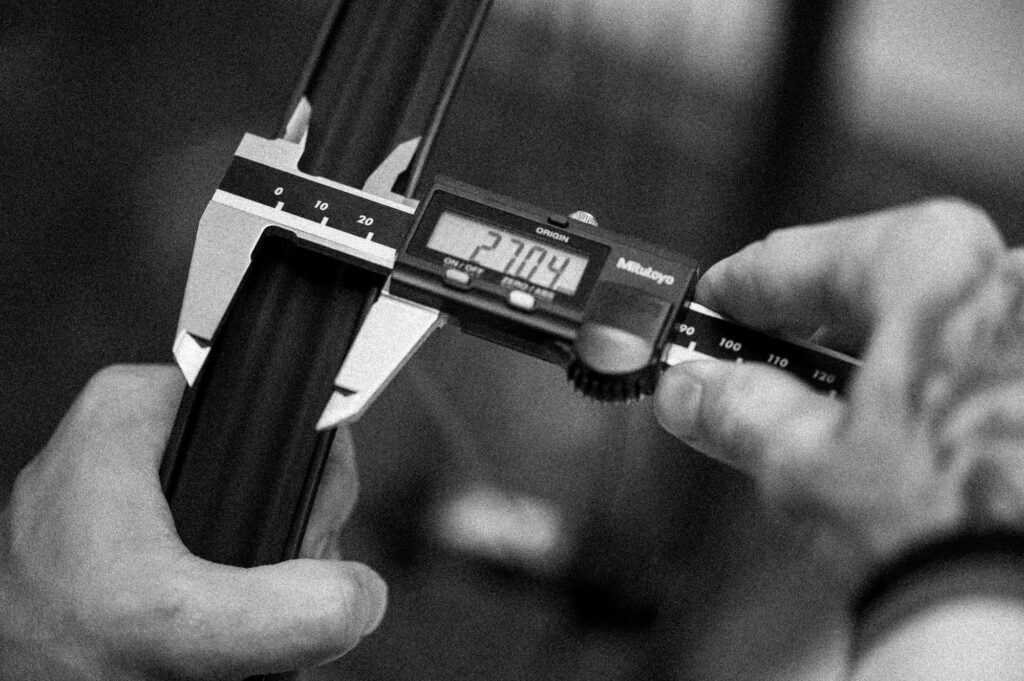
The same tire on a rim of different widths can have a different shape, which affects its characteristics and behavior during riding. A tire with a nominal width of 28 mm installed on different rims can in fact significantly differ in its real width.
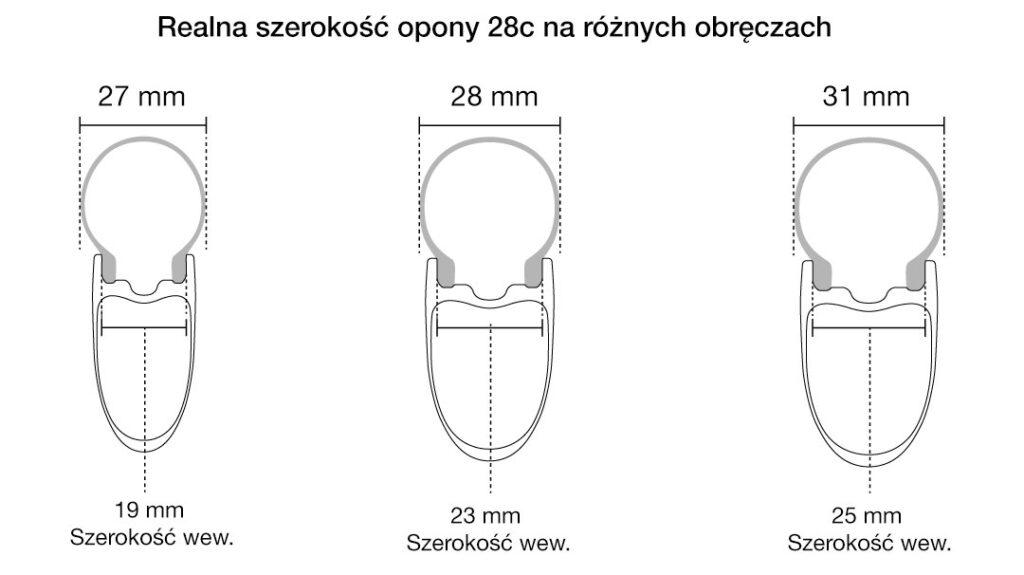
The compatibility of tires with rims is regulated by the ETRTO (European Tire and Rim Technical Organization), which annually updates its standards and norms. The trend indicates that tires will become wider.
A tire that is installed on a too narrow rim will tend to take on a “bulb” shape, while the same tire installed on a too wide rim may take on a “pancake” shape. Both of these cases are dangerous, as they can lead to the tire slipping off the rim during riding. Therefore, it is always important to follow the ETRTO recommendations and the recommendations of the tire and rim manufacturers to choose the correct configuration.


A too-narrow rim will not provide the proper support for the sidewalls of the tyre, which can cause a feeling of instability during riding. On the other hand, a too-wide rim can promote faster wear of the sidewalls of the tyre and also expose the rim edges to damage. Therefore, tires should be matched to the rims on which they will be installed.
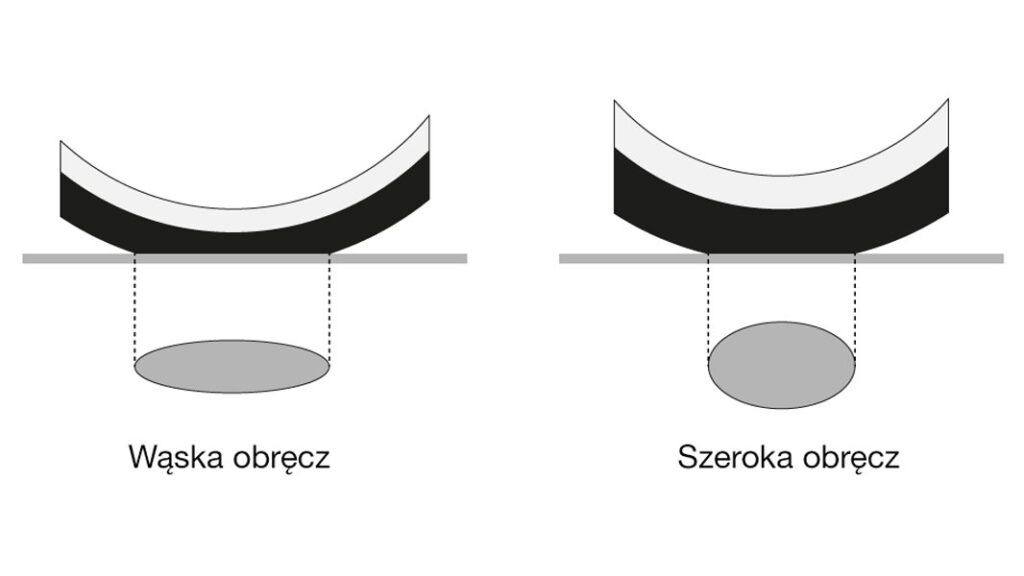
The width of the rim also affects the shape of the contact surface of the tire with the ground. The more the shape is close to the wheel, the less deformation of the tire at the point of contact with the surface. This is a very desirable situation, as it has many benefits for the cyclist.
The advantages of wide rims overlap with the advantages of hookless rims and wide tires, as they all provide a larger and less deformed contact patch between the tire and the ground. The most important ones are:

Most of these benefits come from the more circular shape and larger contact area of the tire with the ground. The larger contact area of the tire with the surface provides better traction, thus reducing the risk of slipping, so you can feel more confident when cornering. The wider support of the sides of the rim reduces the effect of the bike floating to the side and improves the feel of the ground, which affects better control of the bike. In turn, the reduction in rolling resistance results from the reduction in the amount of energy consumed by the deformation of the tire at the point of contact with the ground. This difference is not large, but in the era of “marginal benefits,” it can be a real way to reduce the resistance of the ride, more effective than, for example, ceramic bearings in the hubs.
Wider rims also help to reduce vibrations transmitted to the handlebar and saddle, which has a positive effect on riding comfort and further reduces the resistance to overcoming irregularities. Another benefit of riding on wide rims is the ability to reduce tire pressure, which further improves comfort and grip. We wrote in the article “Optimal Tire Pressure” that the optimal tire pressure does not have to be maximum.
Wider rims also widen the tires. For example, a tire with a nominal width of 28 mm after being fitted to a wide rim can be as wide as 32 mm. This allows you to save tens of grams of rotating mass compared to a tire with a nominal width of 32 mm fitted to a narrow rim.
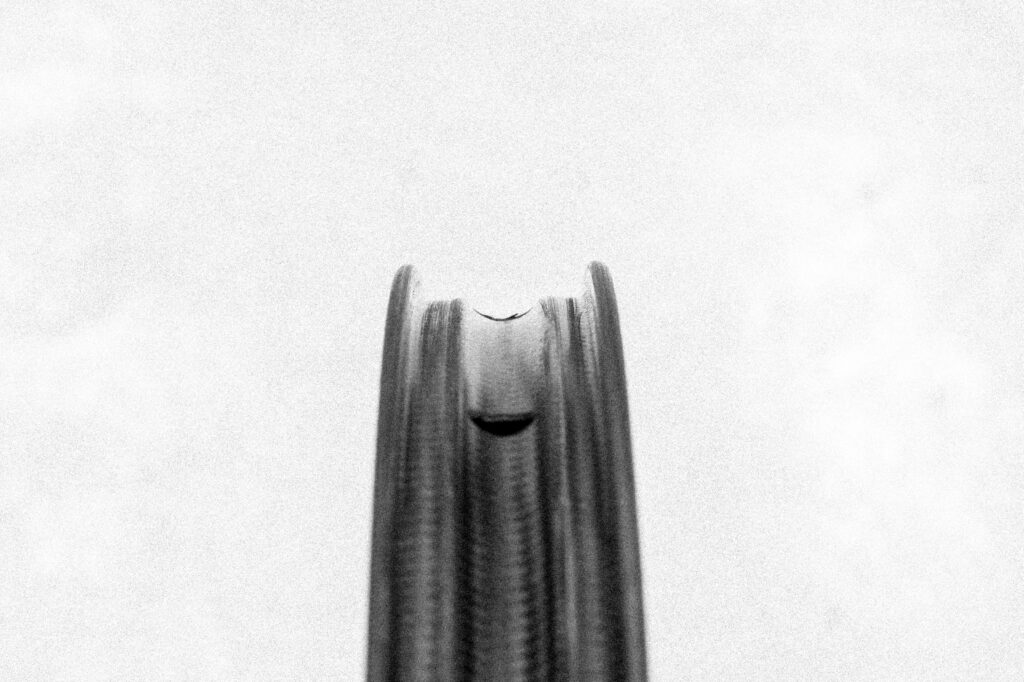
We believe that it is important to use rims at the upper limit of the range specified by ETRTO for a given tire size. Therefore, for road bikes, we recommend rims with an internal width of 23-25 mm, for gravel bikes 25-28 mm, and for XC MTB 30-35 mm.
Wide rims have a few disadvantages, but they are not particularly significant. The biggest problem may be the compatibility of used tires with wide rims. Some of the tires on the market should not be fitted to them. For example, the previous version of the Continental Grand Prix 5000 road tire is not designed for wide rims, but its new (2022) version marked with the S TR symbol is. Improperly matched tires to the rim may slip off the rim during riding, so this issue should not be neglected. Compatibility tables have been prepared by companies such as ZIPP and ENVE.

Another disadvantage of wide rims may be their additional weight. However, our Hyperion 30 rims with an internal width of 28 mm, weighing 335 g, prove this is not necessarily true. Their mass is the same as that of Pulsar 30 rims with a width of 25 mm. Nevertheless, some of the wider rims on the market may be slightly heavier than their narrow counterparts.
Share:
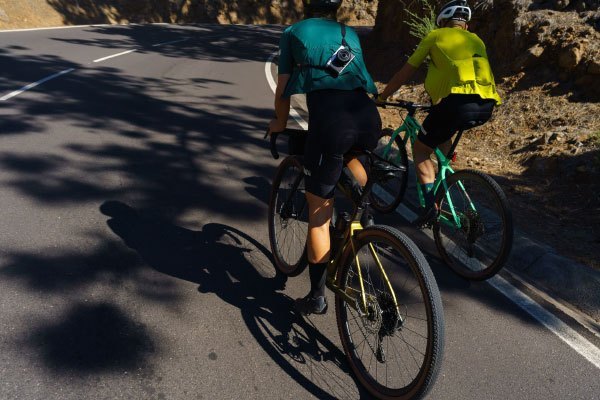
Extra discount
Buy any two sets of carbon wheels
and get 5% off both!
Simply add both wheel sets to your cart and the discount will be applied automatically.